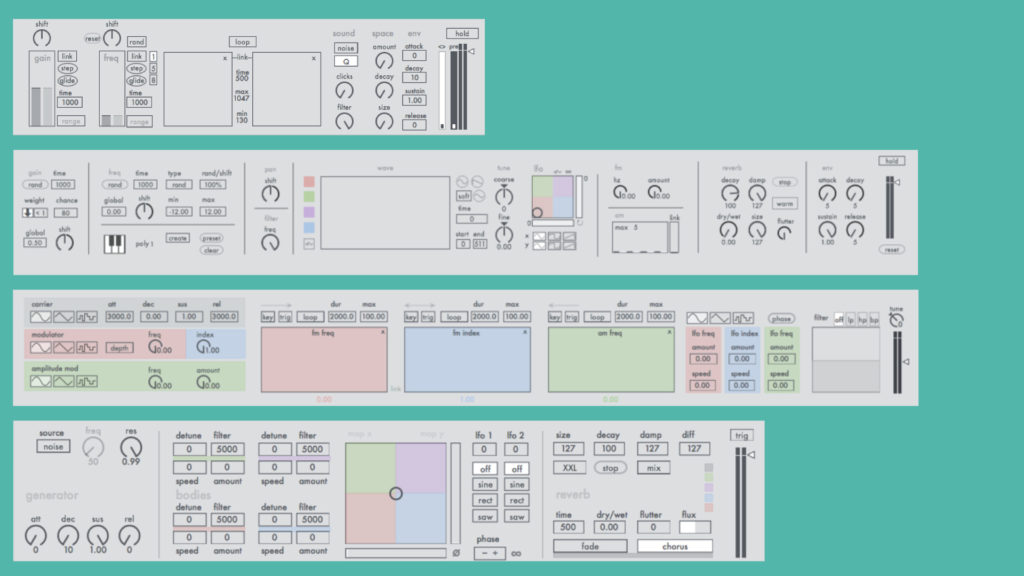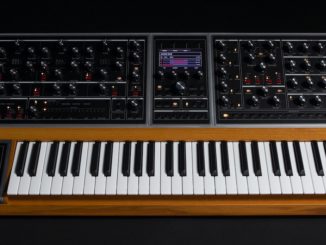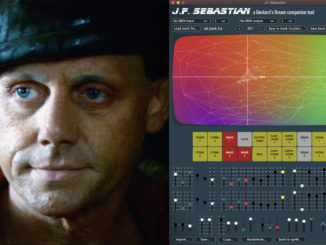Tilman Ehrhorn, a musician & sound designer from Berlin has developed numerous inspiring Max For Live synths for the price of a cup of coffee
You have probably already asked yourself why in times of YouTube etc. online magazines etc. are still needed. Well, I’ll give you one reason: we’re not only there to provide readers with the latest news, but also to discover and report on hidden music tech pearls. So everything without marketing money.
CDM recently reported about the wonderful Max For Live Synthesizer devices created by the Berlin-based multi-instrumentalist and sound designer Tilman Ehrhorn. Thanks, Peter for highlighting these instruments, I didn’t know them before, probably neither did you. These are very nice synths, each covers a different synthesis concept, and which are available for the price of a coffee.
New Synth Upgrade For Ableton Live
Let’s start with *reso which is a polyphonic Synthesizer that is based on simple physical modelling. The core originates from randomly generated clicks or white noise which is passed through a resonant bank. The circuit of the resonator bank can be adjusted to achieve different results in sound quality. It features two generators where each gain and frequency can be modulated, and envelopes can be adapted to the individual settings.
To make the sound stand out, you can activate a reverb to improve the pad-like sound quality. The created sound can be also individually panned to two different channels to achieve a simple spatial distribution.
*wave is also a polyphonic synth but is based on a combination of wavetable synthesis and waveshaping. The oscillator section is based around four different waveforms that can be loaded or drawn into an editor simultaneously. Their levels can be controlled by a matrix. These waveforms can be upgraded in the sound spectrum via an option to load or manually generated harmonic series to an oscillator bank.
All this is rounded up by envelopes, LFOs, and randomizers with which you can control and modulate various parameters.
*fm is the third synth and as the name suggests, it is a polyphonic FM Synthesizer for Max For Live. The generation of sound is based on frequency modulation, containing additional amplitude modulation to shape the sound. The multi-wave operators form the carrier of the engine.
They are joined by envelopes, LFOs, and a filter. The latter comes with several filter types and can be applied at the end of the signal chain.
Let’s go on, it’s far from finished. *string is another polyphonic physical modelling based Synthesizer. It is based on a Karplus-Strong algorithm and contains pitch and damping (i.e. filtering) effects. The sound source consists of four modelled strings whose ‘excitators’ or ‘generators’ originate from white noise or randomly generated clicks.
In the ‘body’ section pitch and filter settings can be set for each string individually. With an additional LFO, you can modulate the individual pitch parameters. Each of the four modelled strings can be sent to an individual ‘reverberation room’, setting different size and decay times a.o.
Wait, there is one more poly physical modelling synth named *pluck. Also, this Max For Live device is based on a Karplus-Strong Algorithm and contains pitch, damping, comb filtering and waveshaping effects. The sound source consists of eight modelled strings whose excitators originate from white noise or randomly generated clicks. Envelopes, multi sliders and LFOs can be used to modulate various parameters for each string individually or in pairs.
It goes on with wonderful synths. *perc is a percussion Synthesizer which generates its sounds by sending short impulses of noise to a resonator. This resonator has been built from a delay line in combination with several all-pass filters, the signal will be additionally sent through a comb filter emphasizing the characteristic sound. Continuously shaping the sound by different parameters will result in harmonically rich, tonal but still noisy percussive sounds, depending on the individual settings.
It is possible to shape the sound on two different channels (left+right) to achieve a simple spatial distribution. Furthermore, it is possible to put some additional reverb on the sounds to create some reverberation tails which can be recorded within the device to obtain a noisy pad sound that can be played polyphonically after the generation process.
In addition to these many synths, Tilman Ehrhorn has other exciting Max For Live devices on offer at bargain prices:
- *map is a midi effect which can be mapped to any control parameter in the DAW session with precise fine-tuning.
- *lfo is a modulation effect which can be put into any audio [te.lfo_audio] or midi [te.lfo_midi] track of Ableton Live.
- *env is a midi effect which works like a standard envelope.
- *speq is a spectral processing audio effect, inspired by a Cycling ´74-tutorial-patch entitled “Forbidden Planet” by Gregory Taylor.
- *verb is an audio effect working like a standard reverb with some extra parameter modulation possibilities.
- *pulse is an arpeggiator midi effect which continuously generates incoming midi notes. The notes can be arpeggiated as single notes or as polyphonic structures, i.e. chords.
- *freeze is a sound processing audio instrument which freezes audio input signal. The processed audio sample will be looped and can be played polyphonically.
- *step is a step sequencer midi effect.
More M4L devices are coming soon. Among other things, *grain is a granular sampler and *drone, a drone enerator are still in the making.
Very exciting M4L synthesizers and audio tools. The best part about them, they are really bargains. The Tilman Ehrhorn synths start at 3€+ (each) and the audio processors at 1€+. So very affordable for everyone who has Ableton Live and M4L.
More information here: Tilmann E.





Be the first to comment